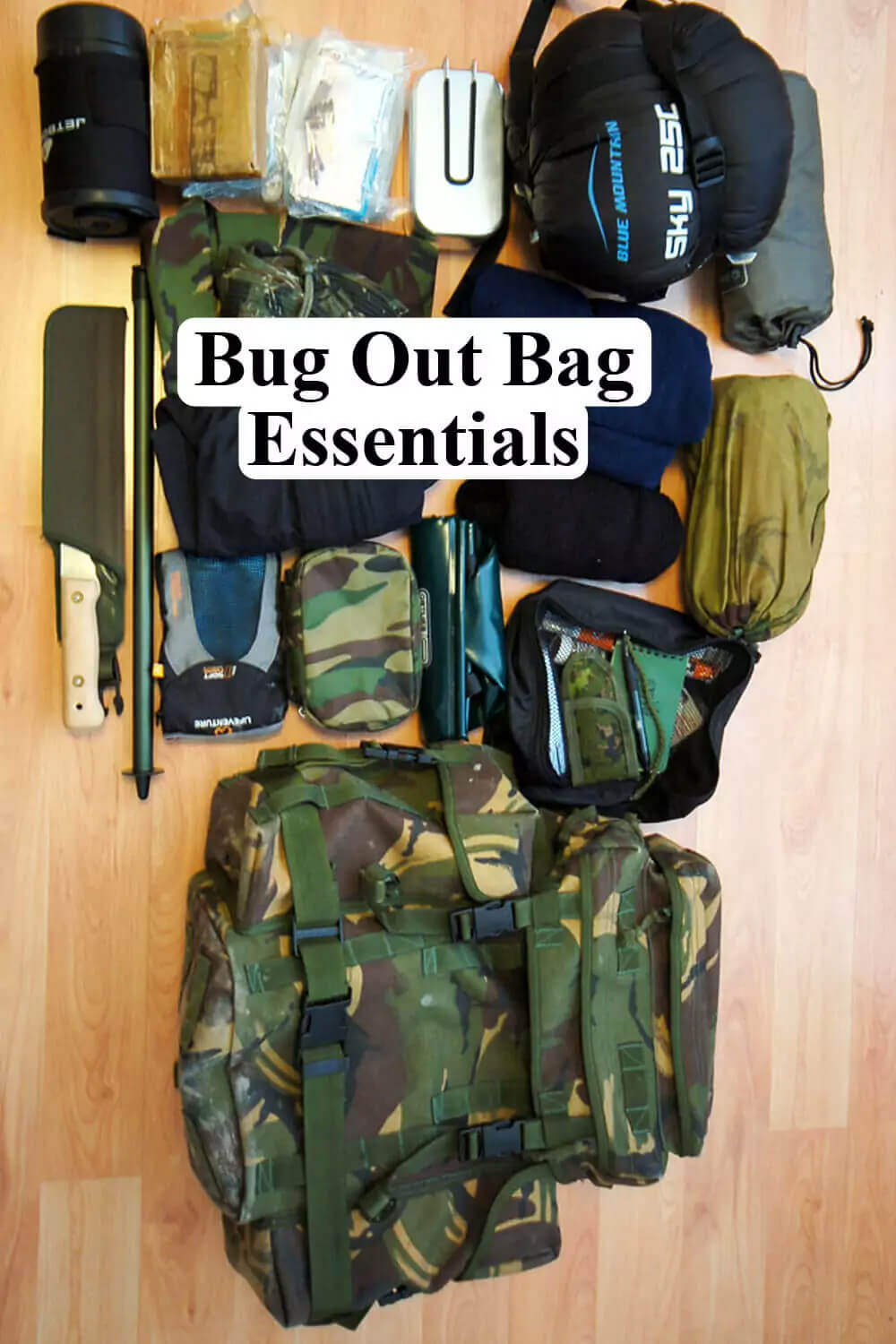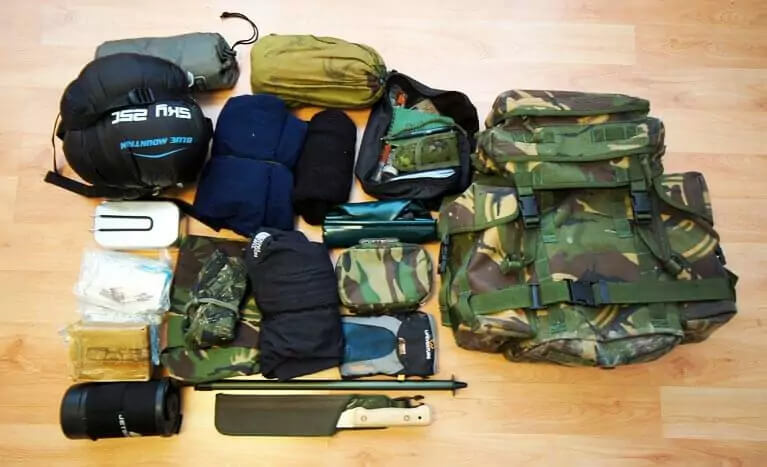Creating a Bug-Out Bag, And The Best 15 Supplies To Include
Fires, earthquakes, meteors, floods, droughts… are you prepared?
I don’t watch TV, so my news ferments in the muck of social media. I recently watched a video of people stuck in a flooded Chinese subway—the flickering lights, the muddy water roaring from dark caverns into their subway cart. As the water poured in, my heart ached for the stranded passengers. A Chinese voice spoke to English subtitles: “My phone battery is dying, so I don’t know if this is my last video.”
I can only hope they made it out alive.
You truly never know when the next disaster will strike or when sh*t will hit the fan (as they say), so it’s wise to be prepared. My karate instructor always used to say:
“Always expect the unexpected”
Was he talking about world pandemics, runaway inflation, or fires raging across the world?
I never understood what he meant until I grew up and witnessed recent world calamities. I see unexpected events all around me now, so I understand how prepping for extreme scenarios WILL save your life. Thankfully, you can improve your survival chances by having a bug-out bag ready.
Bug-out bags (aka BOBs) are portable kits with supplies that help you survive when forced outside your primary shelter. Survival times vary, depending on the contents of the BOB. It’s possible to buy fully outfitted bug-out bags. However, many people pack their own and customize it according to their needs and preferences.
BOBs are designed for short-term survival, evacuation, and escape. It’s critical to have your essentials ready to move on an instant. To create a viable bug-out bag, first cover the basics; then organize the contents to access everything easily. Being organized is the best way to avoid missing out on something important. Don’t end up needing an item you forgot to pack! For best results, have a 48-72 hour bug-out bag with supplies to sustain you for that amount of time. Even though they are designed for short-term survival, you should have a long term plan and location in mind.
This list of 15 essential items for a bug-out bag is not comprehensive; however, the most effective bug-out bags tend to feature most of these items.
- Water
As you know, water is life. Use it for drinking, washing, cooking, and other activities. Include a water reservoir for easy access to drinking. You may be traveling fast, with no time to stop and grab a water bottle from your bag, so having accessible water with a straw is important. Pack a Life Straw. They are light and portable. - Food
Another life essential. A wide variety of food options are available for bug-out bags, and most have a long shelf life. Get freeze-dried backpacking and camping meals like Mountain House Adventure Meals They are light and won’t weigh you down. You will hydrate these meals with hot water, so purchase a mini propane gas stove like this. Fire it with a small canister of propane to prepare meals for yourself and others. - Water purification supplies
Since potable water will be limited and you can’t always rely on water from random places, include purification devices like the Life Straw and water purification tablets to make water safe for consumption. Avoid food poisoning (from dirty water), especially in a situation where you must stay focused and alert. - Basic cooking gear
You might need to process food that you forage or scavenge when you run out of supplies. Purchase a lightweight camping cookware set with other implements you need to cook and consume food. - First-Aid Kit
A first-aid kit can save a life. Attend to wounds or assist others in your party with basic first-aid. Keep your bag’s weight reasonable by removing unnecessary items. - Extra socks and underwear
Many people overlook the importance of clean socks and underwear. When they get wet, worn out, or excessively sweaty, they invite skin rashes, painful blisters, and nasty bacteria. Soldiers in the battlefield for long periods know the importance of clean socks and underwear. - Physical maps and logistics information
While escaping a bad scene, you can’t rely on GPS, phones, or the internet. Standard communication systems and other digital services will be down. Physical maps and resource shortlists are needed. Plan ahead and map multiple escape routes from your home and surrounding neighborhood. Familiarize yourself with your area before an emergency arises. - Swiss Army Knife
Pack as many tools as possible in the smallest space and with the lightest footprint. Use a Swiss army knife to prepare meals, render first-aid, and in other tasks. Swiss army knives can also be used for self-defense and hunting. - Duct tape
Duct tape is an often overlooked essential. Build makeshift devices with it, such as fishing sticks, temporary casts and bandages, or even entire shelters. I wrote a blog on the survival uses of duct tape. Definitely put a few rolls of duct tape in your bug-out bag! - Sewing kit
Learn to stitch up holes in clothing BEFORE an emergency situation. Practice on old clothes or towels. A simple sewing kit is lightweight and will come in handy when clothing deteriorates or a hole forms in your bug-out bag. - Compass
If you don’t have a physical map or cannot fully determine where you’re headed, a compass will help. You can also follow the direction of the sun because it rises in the east and sets in the west, but at nighttime you will need a compass. - Pepper Spray
Pepper spray is ideal for self-defense, especially when you need to make a quick exit. To double-up on protection, carry bear spray If you bug-out to the woods or run into dangerous people, bear spray protects in both situations. - Tent and sleep gear
You will need shelter during the nights and possibly days. Invest in a lightweight compact tent that fits in your bug-out bag. Don’t be left wondering where the heck you will find shelter after you leave your primary shelter. Pack an emergency sleeping bag, for warmth during the cool weather. - Money and ID
Bug-out bags aren’t only for extreme scenarios. They can be used when escaping your home in a rush. You probably won’t have access to your bank account or other sources of money and personal data. Pocket money and ID documents will be good to have. - Air filtration mask
Air filtration can be critical in bad air conditions. In case of a bioweapon or airborne illness, pack n95 masks to help you breathe.
All of these items are a great start to building the optimal bug out bag for you and your family. Stay safe!


